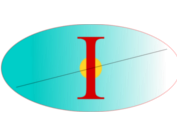Citation:
| baer2004c.pdf | 1.12 MB |
Abstract:
The small-bias conductance of the C-6 molecule, stretched between two metallic leads, is studied using time-dependent density functional theory within the adiabatic local density approximation. The leads are modeled by jellium slabs, the electronic density and the current density are described on a grid, whereas the core electrons and the highly oscillating valence orbitals are approximated using standard norm-conserving pseudopotentials. The jellium leads are supplemented by a complex absorbing potential that serves to absorb charge reaching the edge of the electrodes and hence mimic irreversible flow into the macroscopic metal. The system is rapidly exposed to a ramp potential directed along the C-6 axis, which gives rise to the onset of charge and current oscillations. As time progresses, a fast redistribution of the molecular charge is observed, which translates into a direct current response. Accompanying the dc signal, alternating current fluctuations of charge and currents within the molecule and the metallic leads are observed. These form the complex impedance of the molecule and are especially strong at the plasmon frequency of the leads and the lowest excitation peak of C-6. We study the molecular conductance in two limits: the strong coupling limit, where the edge atoms of the chain are submerged in the jellium and the weak coupling case, where the carbon atoms and the leads do not overlap spatially. (C) 2004 American Institute of Physics.
Notes:
RBaer-Publication



